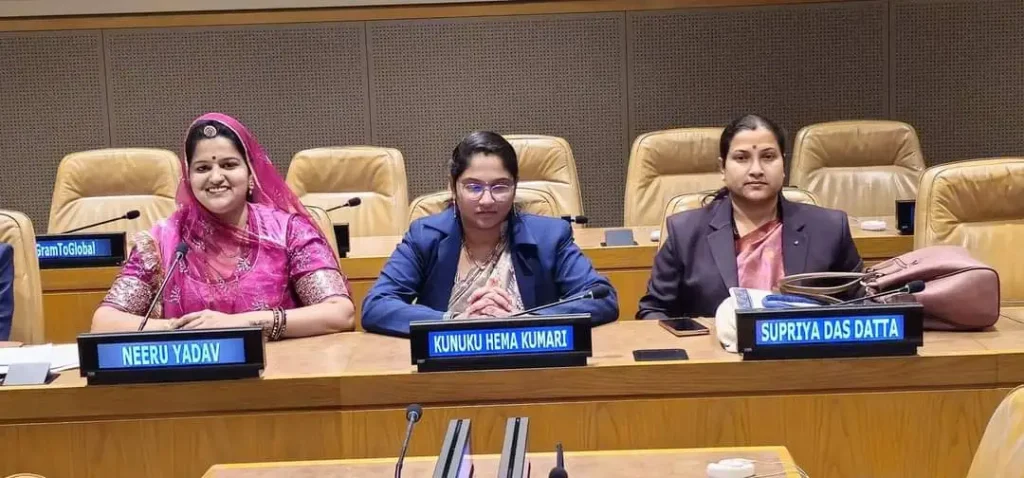Context:
Elected Women Representatives (EWRs) from India’s Panchayati Raj Institutions (PRIs) participated in a side event at the UN Commission on Population and Development (CPD57).
Key highlights:
- The Side event organized by the Permanent Mission of India to the United Nations and the Ministry of Panchayati Raj, in collaboration with the United Nations Population Fund (UNFPA).
- It was organized as a part of the fifty-seventh session of the United Nations CPD57 in New York on 3rd May 2024.
- The event titled “Localizing the SDGs: Women in Local Governance in India Lead the Way” showcased India’s progress.
- Elected women representatives (EWRs) from India’s Panchayati Raj Institutions were the focal point of the event.
- The event was attended by three prominent Panchayat leaders, Smt. Supriya Das Datta, Smt. Kunuku Hema Kumari, and Smt. Neeru Yadav shared their experiences ranging from combating child marriage, promoting education, financial inclusion, livelihood opportunities, and environmental sustainability, to sports development.
- Ambassador Ruchira Kamboj highlighted India’s Panchayati Raj system as a model of decentralized power and direct democracy, facilitating active participation of citizens.
Secretary of the Ministry of Panchayati Raj highlighted India’s commitment to empowering women in local governance, with over 46% of elected representatives being women.
- He also explained how Gram Panchayats are localizing the SDGs with annual plans, resources, and technological tools like geo-tagging and Audit Online.
- Initiatives like the Panchayat Development Index to assess the overall holistic development, performance, and progress of Panchayats.
The Panchayati Raj Institutions have also been instrumental in leveraging technology for development and policy interventions.
- Examples of such initiatives include the “Drone Didi” and “Lakhpati Didi” programs of the Central Government
Significance:
- India’s Contribution to SDGs and Women’s Empowerment: It showcases India’s commitment to achieving the SDGs and its efforts to promote gender equality through the Panchayati Raj system.
- Panchayati Raj System as a Best Practice: The event underlines the effectiveness of India’s Panchayati Raj system in local governance, potentially serving as a model for other developing nations.
Commission on Population and Development (CPD)
- Established in 1946 (originally called Population Commission, renamed in 1994).
- to monitor and review progress on implementing the Programme of Action of the International Conference on Population and Development (ICPD).
- It operates at the national, regional, and international levels.
Focuses on population and development issues, including:
- Population trends and their impact on development
- Integrating population concerns into development strategies
- Policies and programs related to population and development
Composition:
- Meets annually at UN Headquarters in New York.
- Comprises 47 Member States elected by ECOSOC for a four-year term based on geographic distribution.
- Representatives should have a relevant background in population and development.

